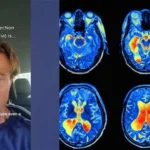What is the 333 Rule for Anxiety? A Comprehensive Guide to Understanding and Implementing this Powerful Technique:Are you tired of feeling overwhelmed by anxiety? Do you wish there was a simple rule to help you manage your anxious thoughts and find some much-needed relief? Look no further, because in this blog post, we are going to explore the 333 Rule for Anxiety. This rule is a game-changer when it comes to understanding and coping with anxiety. Whether you’re a teenager struggling with social anxiety or an adult dealing with daily stress, the 333 Rule can be a valuable tool in your anxiety management toolbox. So, get ready to discover the power of this rule and learn how to implement it in your daily life. Say goodbye to anxiety and hello to a calmer, more peaceful you!
Understanding the 333 Rule for Anxiety
Anxiety can often feel like an overwhelming force, enveloping the mind in a fog of worry and fear. However, there are strategies to mitigate its grip, and the 333 rule for anxiety is one such effective technique. By focusing on the immediate environment, this method helps individuals ground themselves in the present moment, diverting attention away from anxious thoughts. Here’s how it works:
- Name three things you can see.
- Name three things you can hear.
- Move three different body parts (e.g., fingers, toes, neck).
This simple yet powerful approach serves as a cognitive distraction, allowing one to regain a sense of control and reduce the intensity of anxiety symptoms.
The 4 C’s of Anxiety: A Framework for Understanding
When grappling with anxiety, it’s crucial to comprehend its multifaceted nature. The 4 C’s of anxiety – concentration, confidence, control, and commitment – offer a framework to understand how anxiety can affect an individual’s life and how one might address it:
- Concentration: Anxiety can disrupt focus, making it challenging to concentrate on tasks at hand.
- Confidence: It can erode self-belief, leading to doubts about one’s abilities.
- Control: A sense of losing control is often at the heart of anxiety.
- Commitment: Anxiety can hinder one’s commitment to engage in activities or pursue goals.
Addressing each of these areas can help alleviate the burden of anxiety and improve one’s overall quality of life.
Instant Anxiety Relief: The Role of Benzodiazepines
In moments of acute anxiety, rapid relief is sometimes necessary. Benzodiazepines are a class of medications that can provide such relief, with effects typically felt within 30 to 90 minutes of taking the drug. While effective, these medications should be used with caution, under the guidance of a healthcare professional, due to potential for dependence and other side effects.
Nutritional Approaches to Anxiety: Vitamins and Diet
Vitamins B9 and B12: The Mental Health Connection
Deficiencies in vitamins B9 (folate) and B12 have been associated with heightened levels of anxiety and depression. Ensuring adequate intake of these vitamins, through diet or supplements, may contribute to better anxiety management and improved mood.
The Calming Effect of Magnesium-Rich Foods
Magnesium plays a role in numerous bodily functions, including those that regulate mood and stress responses. Foods high in magnesium, such as leafy greens, legumes, nuts, seeds, and whole grains, can help in reducing anxiety symptoms, making them a valuable addition to an anxiety-reducing diet.
Zinc: A Mineral for Mental Wellbeing
Similarly, zinc is another nutrient with a connection to anxiety. Regular consumption of zinc-rich foods like oysters, cashews, liver, beef, and egg yolks has been linked to lower anxiety levels. These foods can fortify the body’s ability to cope with stress and may serve as a complementary approach to traditional anxiety treatments.
The 3 P’s of Anxiety: Understanding Cognitive Distortions
Anxiety often involves cognitive distortions that can exacerbate stress and worry. The 3 P’s of anxiety – Pervasiveness, Permanence, and Personalisation – are thought patterns that can intensify the experience of anxiety. Recognizing and challenging these distorted beliefs is a key step in managing anxiety more effectively.
Deep Breathing: The 5-5-5 Method for Anxiety Relief
The 5-5-5 method for anxiety is a breathing technique that can help calm the nervous system and provide immediate relief from anxiety symptoms. By consciously controlling the breath, one can influence the body’s stress response and foster a sense of tranquility. The practice involves:
- Breathing in for 5 seconds.
- Holding your breath for 5 seconds.
- Breathing out for 5 seconds.
Repeating this cycle can help slow down racing thoughts and promote relaxation. It’s a simple yet effective tool that can be used anytime, anywhere.
Understanding the Anxiety Triad in Youth
The anxiety triad refers to the three most common anxiety disorders among young people: separation anxiety disorder (SAD), generalized anxiety disorder (GAD), and social phobia (SoP). These disorders frequently occur together (comorbidity) and can significantly impact a child or adolescent’s life. Addressing these disorders often requires a multifaceted approach, including therapy, lifestyle changes, and sometimes medication.
Recognizing Common Anxiety Symptoms
Identifying the signs of anxiety is the first step towards seeking help. Common symptoms include feeling nervous, restless, or tense, as well as having an increased heart rate. These physical and emotional responses can signal the presence of an anxiety disorder, prompting individuals to explore various coping strategies and treatment options.
Implementing the 333 Rule and Other Techniques in Daily Life
Integrating anxiety management techniques such as the 333 rule, the 4 C’s, and the 5-5-5 breathing method into one’s daily routine can make a significant difference. Here are some actionable tips:
- Practice Regularly: Make these techniques a regular part of your day to build resilience against anxiety.
- Create Reminders: Set reminders on your phone or post notes in your workspace to prompt you to use these methods when anxiety strikes.
- Seek Professional Guidance: If anxiety persists, consider seeking help from a mental health professional who can tailor a treatment plan to your needs.
By actively engaging with these strategies, individuals can empower themselves to manage anxiety more effectively and improve their overall well-being.
Conclusion
Understanding and managing anxiety is a journey that involves self-awareness, patience, and often a combination of strategies. The 333 rule for anxiety, along with nutritional considerations and breathing techniques, provides practical tools to address the immediate symptoms of anxiety. By learning to incorporate these methods into everyday life, those affected can gain a sense of empowerment and control over their mental health. Remember, while these techniques can offer relief, they are most effective when used in conjunction with professional advice and treatment plans tailored to the individual’s unique circumstances.
FAQ & Common Questions about the 333 Rule for Anxiety
Q: What is the 5 5 5 method for anxiety?
A: The 5 5 5 method is a simple deep breathing exercise where you breathe in for 5 seconds, hold your breath for 5 seconds, and then breathe out for 5 seconds.
Q: How can the 5 5 5 method help with anxiety?
A: The 5 5 5 method can help slow down your thoughts and provide relief from anxiety.
Q: What are the common signs and symptoms of anxiety?
A: Common signs and symptoms of anxiety include feeling nervous, restless, or tense, having a sense of impending danger or panic, and an increased heart rate.
Q: What is the number 1 drug for anxiety?
A: Serotonin reuptake inhibitors (SSRIs) are considered the first-line drug treatment for general anxiety disorder.
Q: Are there any over-the-counter alternatives to Xanax for anxiety?
A: Yes, there are supplements that can be used as alternatives to Xanax, such as Passiflora, Kava, GABA, Taurine, Glycine, Niacinamide, L-lysine, L-arginine, and Magnesium.
Q: What is the safest long-term anxiety medication?
A: The safest long-term anxiety medication may vary depending on individual circumstances. It is best to consult with a healthcare professional to determine the most suitable option.





